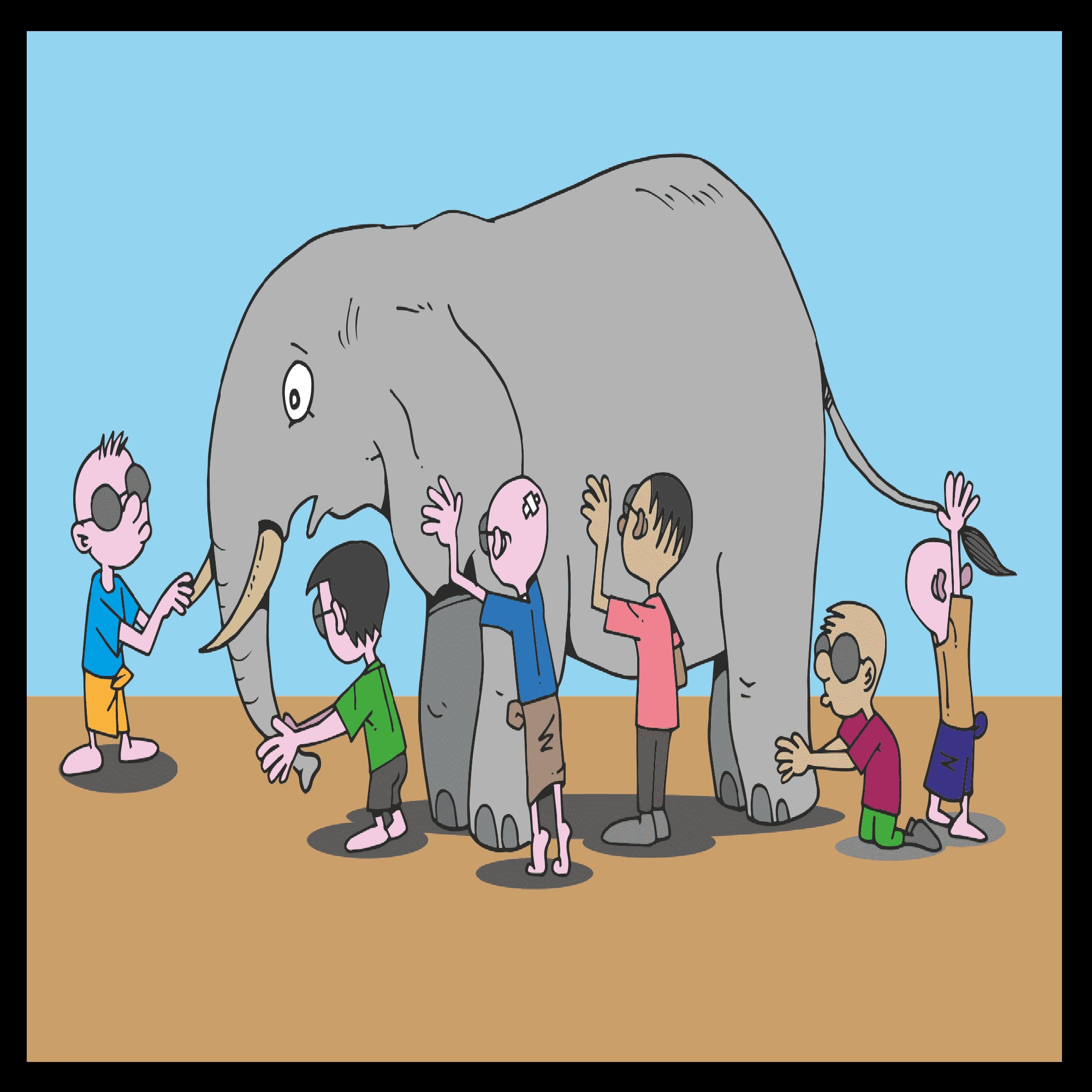One God | Many Revelations | Vedas | Bible | Torah | Quran:
God revealed sacred truths in different ways to different persons. God revealed the Vedas to the ancient sages, and the sages composed hymns…. and texts to express these truths. The First Five Chapters of the Bible, the Torah, were dictated by God to Moses at Mount Sinai. The Quran was verbally revealed by God to Muhammad through the angel Jibril. We call these “Primary Texts.” The author of these Primary Texts is God. We find that the revelations made in these texts are mutually consistent. That is how it should be because God could not reveal contradictory messages to different recipients.
God would not reveal contradictory messages which would contain some falsehood, for, only then they would contradict each other. The pure white colour merges into one another. It is only when red, yellow and blue are added that difference of colours can be seen. Similarly, the Primary Texts are consistent with one another. It is only when they are interpreted that differences emerge.

These three Primary Scriptures assert their divine revelation, which is true. However, many other texts also claim divine revelation. For example, Swami Vivekananda said once “A new revelation has been given to me by the divine.” Thus, claim made by oneself cannot be a proof of a text’s divinity.
The proof of these texts being revealed by God is that they have provided solace and comfort to billions of people. God is all loving. That points to the all-encompassing nature or the Divinity of these texts.
Secondary Texts | Purana | Targum | Hadith | Different Interpretations:
All the major religions, namely, Hindu, Judaism, Christian and Mulsim, have traditions that help in the interpretation of the Primary Texts. The Hindus have भाष्य (commentaries), the Biblical tradition has exegesis, and the Quranic tradition has Tafsirs. The Secondary Texts, such as, the Puranas, Targums and Hadiths are often relied upon in making these interpretations of the Primary Texts.

These interpretations are manmade in contrast with the Primary Texts that are revealed or inspired by God. The One Message of One God becomes different sometimes in the process of this interpretation, and assumes contradictory tones. Thus we get One God Many Religions.
We have tried to show this transformation of One Religion into Many Religions in Picture. The Vedas, Torah and Quran are One Religion as shown in the upper line. But when these texts are interpreted in the light of the Secondary Texts, they become Many Religions as shown in the lower line.

As said above, there are many interpretations of the Primary Texts. One of these interpretations is consistent with other Primary Texts. Other interpretations can be inconsistent with other Primary Texts though they may be consistent with own Secondary Texts. For example, there can be many interpretations of the Vedas. One of these interpretations is consistent with the Torah and the Quran. Another interpretation of the Vedas can be inconsistent with the Torah and the Quran though it may be consistent with the Puranas. In such a situation we must take that interpretation which is consistent with other Primary Texts. If need be, we must put aside the interpretation suggested by the Secondary Texts. We will try to explain this with two examples.
The Vedas tells of rebirth. The Torah and the Quran can be interpreted to either tell of rebirth or deny the same. The Hadiths clearly deny rebirth. In this situation we must interpret the Torah and Quran to tell of rebirth so that the message of Torah and Quran becomes consistent with the Vedas; and put aside the Hadith which is manmade even though told by Prophet Mohammed.
Or, the Vedas tell of multiple gods such as Fire and Water in addition to One God. The Torah and Quran, however, tell of only One God. In this situation we must interpret the Vedas to tell of only One God so that the message of the Vedas becomes consistent with the Torah and the Quran.
Language | Purity | Modifications | Adulterations | Old | New:
It is indeed possible that some Primary Texts have been distorted during transmission. But we have no way of reclaiming the original. The fact nevertheless is that these Holy Texts, even if distorted, continue to provide succour to large numbers of people. Hence we believe that the core content of these texts continues to encapsulate the original Word of God.
Similarly, there is a difference in the time of the revelation of the Primary Texts. The Vedas were revealed, in our reckoning, in the 4th millennium BCE, the Torah around 1500 BCE and the Quran in the 7th century CE. This difference cannot place one text above the other. It is like the grandfather and grandson. The grandfather may have more wisdom even though he may be forgetful, while the grandson may have more knowledge. We cannot place wisdom above knowledge or knowledge above wisdom. We must accept both on equal footing. The task is to accept that interpretation of the Vedas, Torah and Quran that is consistent with each other.
Visit our website: https://www.commonprophets.com/
For Videos: https://www.youtube.com/channel/UCN4sb3toJxNGPjmSubnwz_Q
For more information on the theory of Common Prophets, Please like my FB Page One God One  Religion, Subscribe my English channel One God One Religion, subscribe my Hindi Channel एक ईश्वर, and you may like to buy my book here.
Religion, Subscribe my English channel One God One Religion, subscribe my Hindi Channel एक ईश्वर, and you may like to buy my book here.













